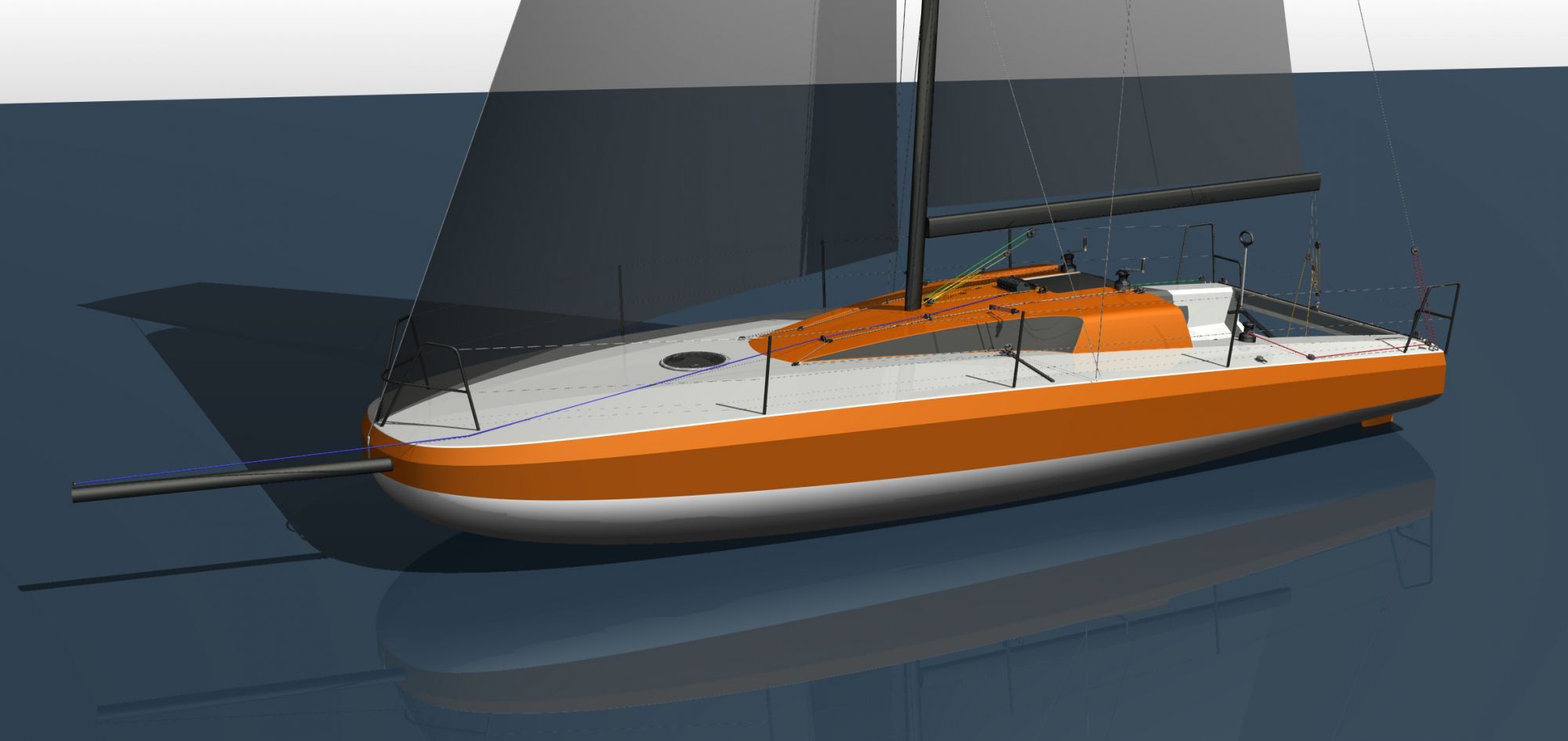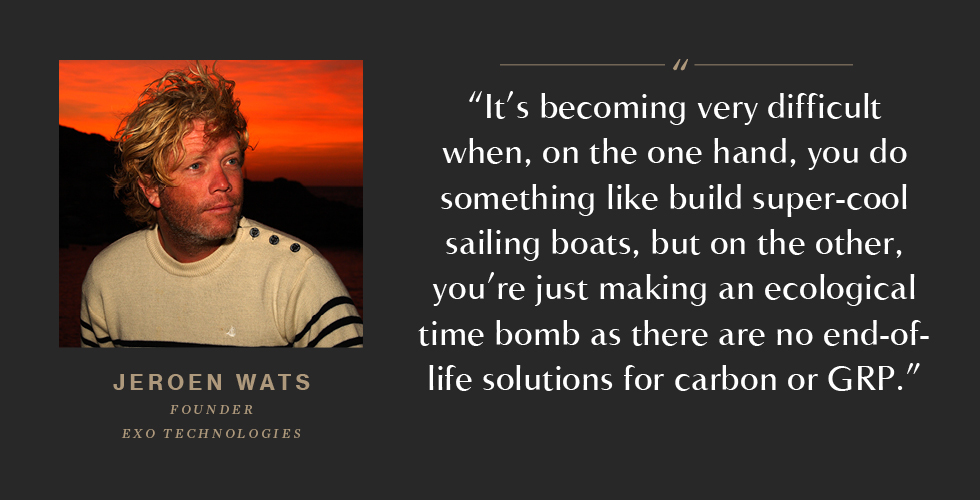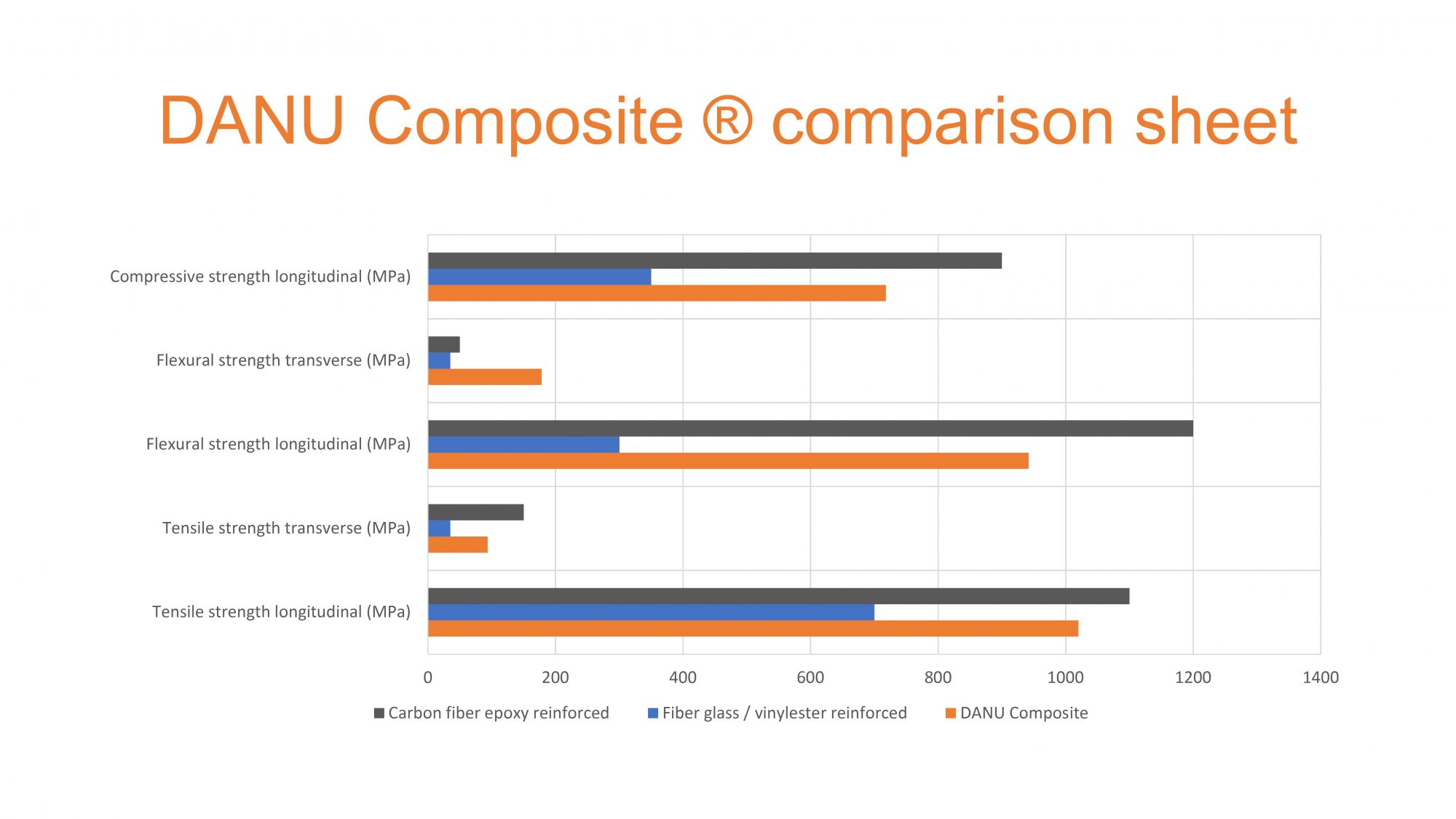The Everlasting Boat
What happens to old boats when they die? If Jeroen Wats has anything to do with it, they won't, thanks to his patented Danu composite, which is 100-percent recyclable – and potentially groundbreaking.
Written by Charlotte Thomas
03 June 2022
As the marine industry wakes up to the importance of environmental consideration, a question that particularly affects the small craft and leisure boat industries arises – what can we do about GRP?
Like many other industries, modern GRP has become a go-to material for boatbuilders since it first emerged in the middle of the 20th century.
Durable, strong, relatively lightweight and with the ability to be formed into myriad complex shapes, it really is the wonder material that has helped the leisure boat sector explode over the past 70 years or so.
While companies are starting to take steps to make GRP more sustainable, such as using more environmentally conscious fibres in place of glass strands or using styrene-free resins, the holy grail of true circular GRP seemed – until recently, at least – to be some way off.
Enter Jeroen Wats, a passionate sailboat racer and environmentalist who realised, after giving up his former career in the early 2000s to build boats, that there was a conflict of interest welling up inside him.
But there’s a downside to GRP quite aside from the by-products of the construction process – it’s not easily disposed of. In fact, it’s estimated that in 2020, 250 million kilograms of GRP were added to landfill in Europe alone.
So, he set out to develop an alternative to GRP. After years of R&D, the system – named Danu, after the Celtic earth-mother goddess – has been fine-tuned and recently granted its patents.
Ocean magazine: Your passion for racing led you to become a boatbuilder. How did you start on the road to Danu?
Jeroen Wats: I’ve built something like 600 performance sailing boats in the past 16 years, but it’s becoming very difficult when, on the one hand, you do something like build super-cool sailing boats, but on the other, you’re just making an ecological time bomb as there are no end-of-life solutions for carbon or GRP.
As a result, at the end of 2018, I decided to change gear, sell my company and invest in the development of a new composite. It had to meet four requirements: it had to be sustainable, it had to be ridiculously strong, it had to be affordable, and it had to be circular, or in other words, completely recyclable.
There was a lot of swearing as every time I thought I had a fantastic idea, it would prove to be circular but ridiculously expensive, or it was affordable but very complex to build with – if shipyards (or whoever) had to reinvest in new materials or equipment or staff training, nobody would do it.
So I joined forces with a partner and we formed ExoTechnologies. After investing more than £3 million in research and development, we did it.
It has been two years of breaking materials, breaking my head, swearing a lot and drinking a lot of coffee! We’ve since had it lab-tested and ISO-certified and so on. It’s seriously strong, but we also needed to prove you could make boats out of it to show the world it could be done.
So we worked on two 7.5-metre boats through another company we set up called the Ultimate Boat Company. We did our calculations and looked at what we did before in fibreglass, and the boat dropped around 25 percent in weight but the cost only went up 1.2 percent.
So the new material and process makes the boat completely recyclable and also saves weight and adds strength?
Although it has been patented, I can’t say exactly what it is, but it’s a sustainable fibre that is fully and repeatedly recyclable. There are no toxic materials – you can even eat it – and the resins are free from styrene.
Everything in the process can be reversed and goes back to its virgin state. What’s more, the fibres are non- irritant, which means that unlike glass fibres, you can touch them and handle them without getting itchy hands.
The best thing is that at its end of life, you can recycle it and keep recycling it forever as it won’t lose any of its mechanical properties. That’s the interesting part because typically, when traditional materials are recycled, they lose mechanical properties.
So you might make a desk from a boat, but in the end you throw it away. But with Danu, you can take, for example, a boat at the end of its life, take the composite back to its virgin state and then make a wind turbine blade.
Then, from that wind turbine blade, you can take the composite back again and make a table, and from the table you can make a boat. And from the boat, you can make a wind turbine blade again.
The materials will stay in the economy and not in landfill. There are two ways to recycle the material, and it’s not expensive to do.
Have you already built a boat using Danu?
At the end of January, we launched a 10.5-metre RIB for law enforcement made entirely out of Danu – the material also has superb ballistic capabilities. The boat handles beautifully and is the first fully circular sustainable boat in the world.
What about other applications, such as America’s Cup yachts? And is there interest from production builders?
I had some calls last year with IMOCA and the Ocean Race to ask them what their mission was – if it’s to go into a truly sustainable, circular economy with the boats, we have the answer.
But if their mission is to break records, we don’t – carbon pre-preg with Nomex cores is strong and ridiculously light. We don’t reach those figures.
The boat will be strong, but will be heavier with Danu. We’re talking to them about using Danu for parts of the boats, but for other areas of the market, it’s a different story.
I’m more into R&D than marketing, but if you could buy a boat for €100,000, or you could buy the same boat but it was fully sustainable, lighter, stronger and recyclable for €101,000, would you buy it? The €1,000 makes no difference.
Danu really is the answer to everything GRP, and any shipyard can start building with it tomorrow – they don’t need new moulds, they don’t need extra investment, and they don’t need to retrain their boatbuilder teams, they can start now.
What’s more, there’s no such thing as osmosis with this composite. It’s UV-resistant and chemical-resistant to an extent. We give a lifetime warranty for the hulls we build at the Ultimate Boat Company.
Our patents are divided into different sectors – ExoWind for wind turbines, ExoMarine for the marine applications, and ExoProtect for the ballistic side – and we’ve been talking to some big players from different sectors.
We can’t compete with the giants in the wind turbine sector, for example, but we can show them we have the answer [for the turbine blades] – and, if they want it, they buy the patent. It’s the same with marine.
It’s a case of saying to Beneteau, Jeanneau, Hanse, Brunswick etc, this is the recipe, this is how it works, and you can buy the patent. If you give us £10 and make £100 for yourselves, good for you.
We want to do something else now, like invest in developing next-gen propellers. We developed a proof of concept with Finot-Conq naval architects in France for a doublehanded racing yacht for the Paris Olympics in 2024.
World Sailing has a sustainable agenda that 90 percent of the weight of the One Design classes in the Olympics has to be recyclable by 2030, so we designed a 32-footer purely for racing. Unfortunately, they’ve gone for kite surfing in 2024 instead.
These boats are already more than 90 percent recyclable, so we’re working on plan B, which is to create our own fleet for elite One Design racing.
So, what’s next for Danu?
We’re opening those discussions with the big boatbuilders because it’s unavoidable that countries will start taxing GRP. In fact, France already does.
We simply can’t go on with GRP anymore, but while there’s no incentive to change, shipyards can be very conservative. That’s why we’re building the boats to prove it. Our team of engineers can help start things up by recalculating a design’s laminate schedule and testing it.
Like I’ve said, we’re not the answer to the entire composite world, but we are 100-percent sure we are the answer to GRP. There is no discussion when it comes to price, economic viability, mechanical properties and so on.
It’s all approved, and we have independent lab reports available as well. What’s more, there are many other industries that this can be used in, from wind turbine manufacturers to food storage to ski manufacturers. Pretty exciting times.









